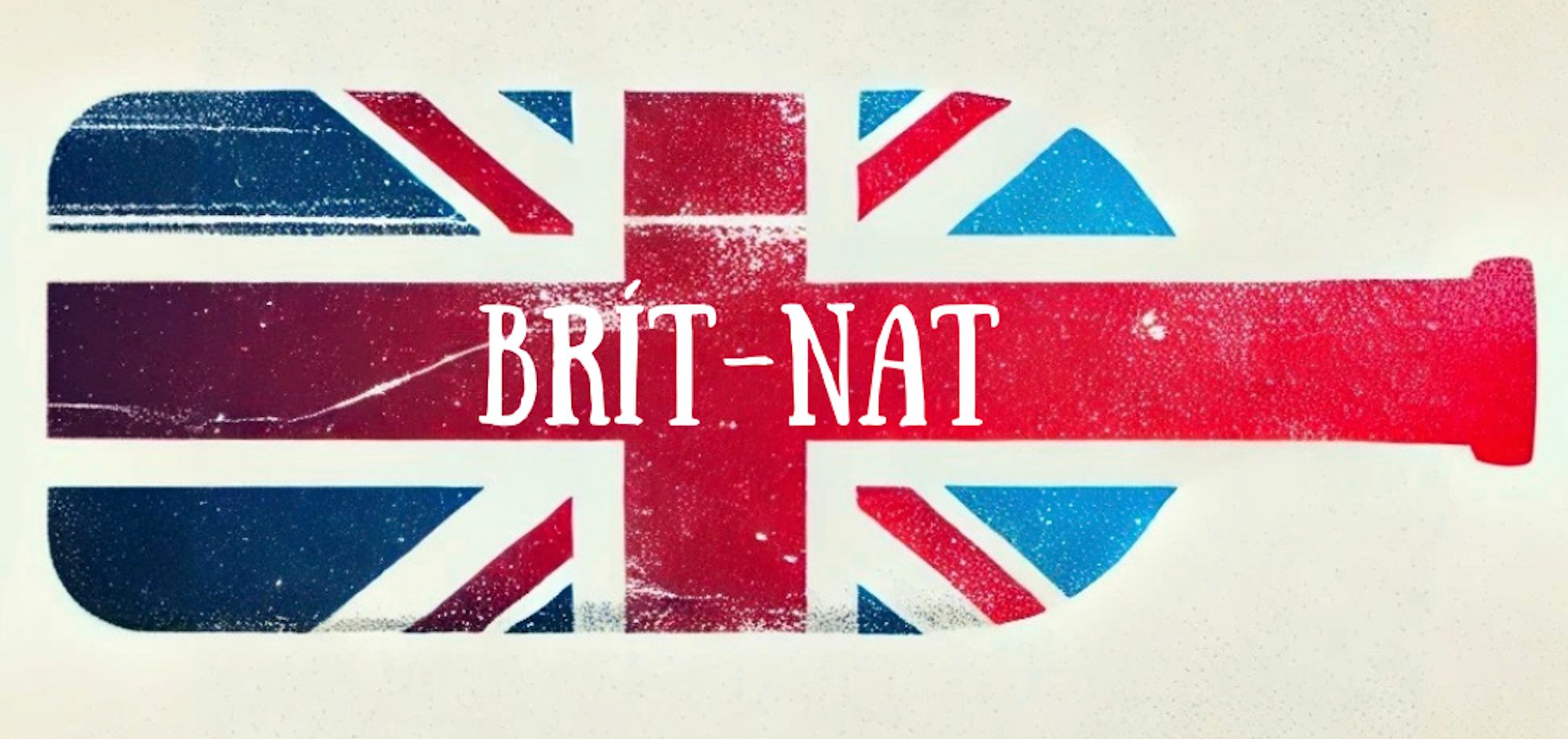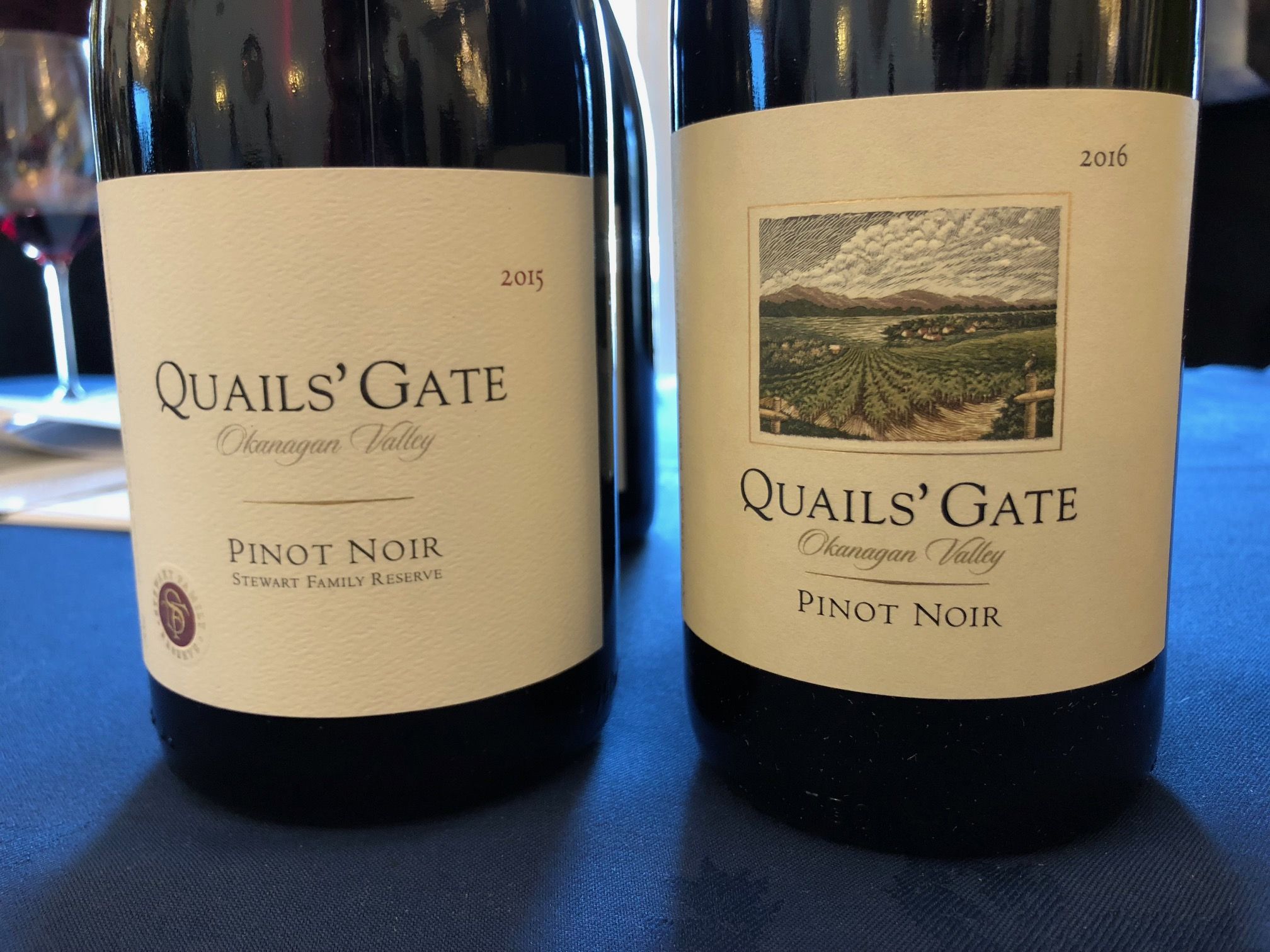You are set to run your second Brit-Nat tasting in September - what do you have in mind?
To bring together all the English and Welsh pét-nat, col fondo and méthode ancestral wines that are currently available on the market. When we first ran the event in 2022 we had 36 wines from 24 producers and this time we’re expecting close to 50 wines from over 30 producers.
Why did you want to focus specifically on pet nats and col fondos?
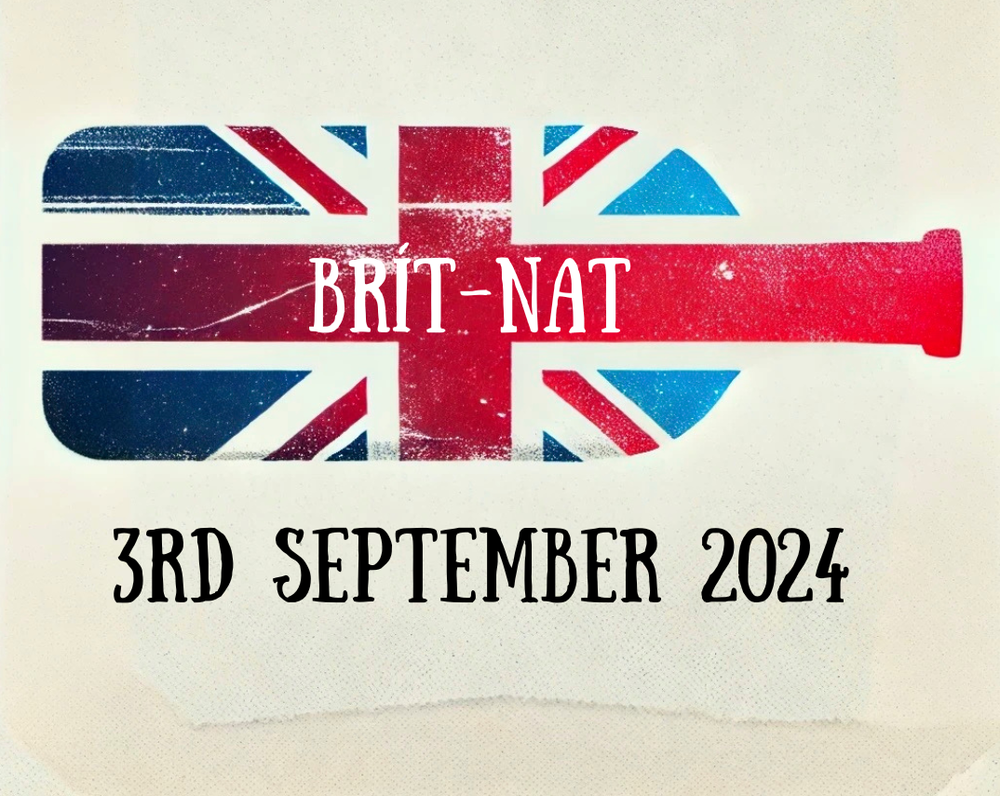
The second Brit-Nat tasting will take place in Soif on Battersea Rise in London SW11 between 10am-3pm.
As a category its moment has arrived. Marks & Spencer released its first pét-nat in April, and it was made in England, which at 9,000 bottles catapulted it into being the UK’s largest pét-nat producer overnight. On the back of this Fiona Beckett wrote a feature article on English and Welsh pét-nat in the Guardian in May, “from hipster bars to M&S” and spoke about the rise of the category as a whole “confirmation of pét-nats place among 2024’s drink trends”.
Add to that the fact that the number of producers in England and Wales has almost doubled in two years, and you know that it's pét-nat’s time to shine.
Why do you think these styles of winemaking deserve their own focus for English and Welsh wine?
Two words, Gen Z.
Younger people are looking for products and brands with integrity, real stories with real people behind them. God bless the red trousered hedge fund managers who planted a vineyard in Sussex, but that story has become old. Pét-nat as a style is ephemeral, it’s Instagrammable, the wines have personality, and so do their producers. By their nature they are made by small scale artisans, they don't feel corporate or polished, and that's very appealing to Gen Z and Millennials.
After three decades English traditional method (trad method) sparkling wine is not only an established story, but it represents The Establishment, which is why the counter culture of pét-nat is getting so much attention. Pét-nat is the antithesis of English trad method wine, it’s non-conformist, different, disruptive, and has a DIY ethos, all things that appeal to younger and more curious drinkers.

The fact Marks & Spencer has introduced its own pét-nat wine shows how fast this style of wine is connecting with wine drinkers - particular younger ones - says Tim Wildman MW
Champagne was upended 30 years ago by the grower movement, with artisan “farmer fizz” making the large, branded Champagne houses look industrial and inauthentic. There’s a similar movement happening now in this country, with pét-nat providing an overlap with the natural wine scene, giving it a real edge and point of difference compared to English sparkling wine producers.
Why do you think they are particularly suited to English and Welsh vines and climate?
What makes this country most suitable for pét-nat isn’t climate or grape variety, it’s that we are a nation of eccentrics. The rebellious, rule breaking, artistic outsider is a powerful figure in British culture, from Blake to Bowie to Banksy, and pét-nat fits into that tradition.
How do you see them fitting into the wider English and Welsh wine scene - or are they very much their own category and personality?
British pét-nat hits the goldilocks zone in terms of price and interest. They all sit somewhere between £25 and £35, delivering an authentic wine of place with a real person and a genuine story behind it. These are wines that are farmed not made, and with great personality, from idiosyncratic packaging, names and labels through to unique styles and flavours.
You won’t find that with sub £20 English charmat, and you’ll struggle to find English trad method wine with the same personality for under £40 these days.
This £25 to £35 sweet spot will be increasingly important over the next few years as English charmat struggles to take off, being squeezed between rising costs of production and the decreasing price of trad method wines being off-loaded due to massive over supply and consolidation.
If the charmat producers can get their product down to £10 a bottle they’ll have a fighting chance, but that will be incredibility challenging in this country. English charmat over £15 simply won’t work at volume, as the massive over-supply in the industry of both grapes and bottled wine will force prices of trad method down to the high teens and low twenties for the next decade, or until the over supply has worked it’s way out of the system, effectively squeezing out charmat positioned anywhere north of £15.
At £25 to £35 pét-nat won’t be the cheapest British wine on the shelf, but it will offer the most value, authenticity and interest, and ultimately I think the consumer will recognise that.
What happened at the first tasting and what learnings can you take into the second one?

The first Brit-Nat tasting was held in 2022. The second one on September 3 promises almost double the amount of wines to taste
The biggest take away from the first Brit-Nat tasting was how few faults we saw, which surprised many of the tasters given the somewhat mixed reputation that pét-nat has developed over the years. In the whole line up there was only one wine with noticeable mousiness, none with excessive VA, and only one wine that was a real gusher, and should probably have been disgorged before being released.
For such a young category that’s a pretty good hit rate, and shows the producers have learnt a lot in a short time about the art of making these wines, and avoiding the pit-falls associated with the category.
Secondly most people thought that the aromatic Germanic varieties worked best, with those wines made from the Champagne varieties often displaying a bit too much of the tart English acid line. Having said that we were looking at a number of wines from the cool 2021 vintage, and there were exceptions to this rule, one of the highest scored wines of the tasting was 100% Chardonnay.
It’ll be fascinating to see what the category looks like two years on, with a run of favourable vintages, and winemakers with more experience.
So what do you have planned for Brit-Nat 2 - what can people expect?
People can expect a snap shot of the entire category, from a man in a field in Herefordshire making pét-nats in a wooden shed with no electricity (Mark Smith, Black Mountain) to M&S’s first release, made at a state of the art winery in Kent, and everything in between. There’ll be pink, white and red pét-nats, from pretty much every county that makes wine in England and Wales and from dozens of different grape varieties. It’ll be a rainbow of diversity, colour and flavours.
The aim is to have every English and Welsh pét-nat available on the market in one room. Due to out-of-stocks and the the fact that not every winery makes a pét-nat every year, we’ll end up with about 80% of them, which is still going to be the largest tasting of this category ever put on.
Attendees will be given a tasting booklet with in-depth details of production methods, not something you always see at natural wine events. The producers are providing as much technical information as possible, including their method of production for pét-nat (interruption or intermission method) and whether the wine is disgorged or undisgorged, which is a really important aspect of the event.
The actual details of natural winemaking, and this includes pét-nat, are often brushed off with a gallic shrug and some mumbling about terroir, but I think that’s a disservice to a professional audience.
There’s a lot of confusion around the terms for pét-nat, even within the trade, one example being the use of the term col fondo for the intermission method. If the trade doesn’t necessarily understand what col fondo means, how can we expect the consumer to know?
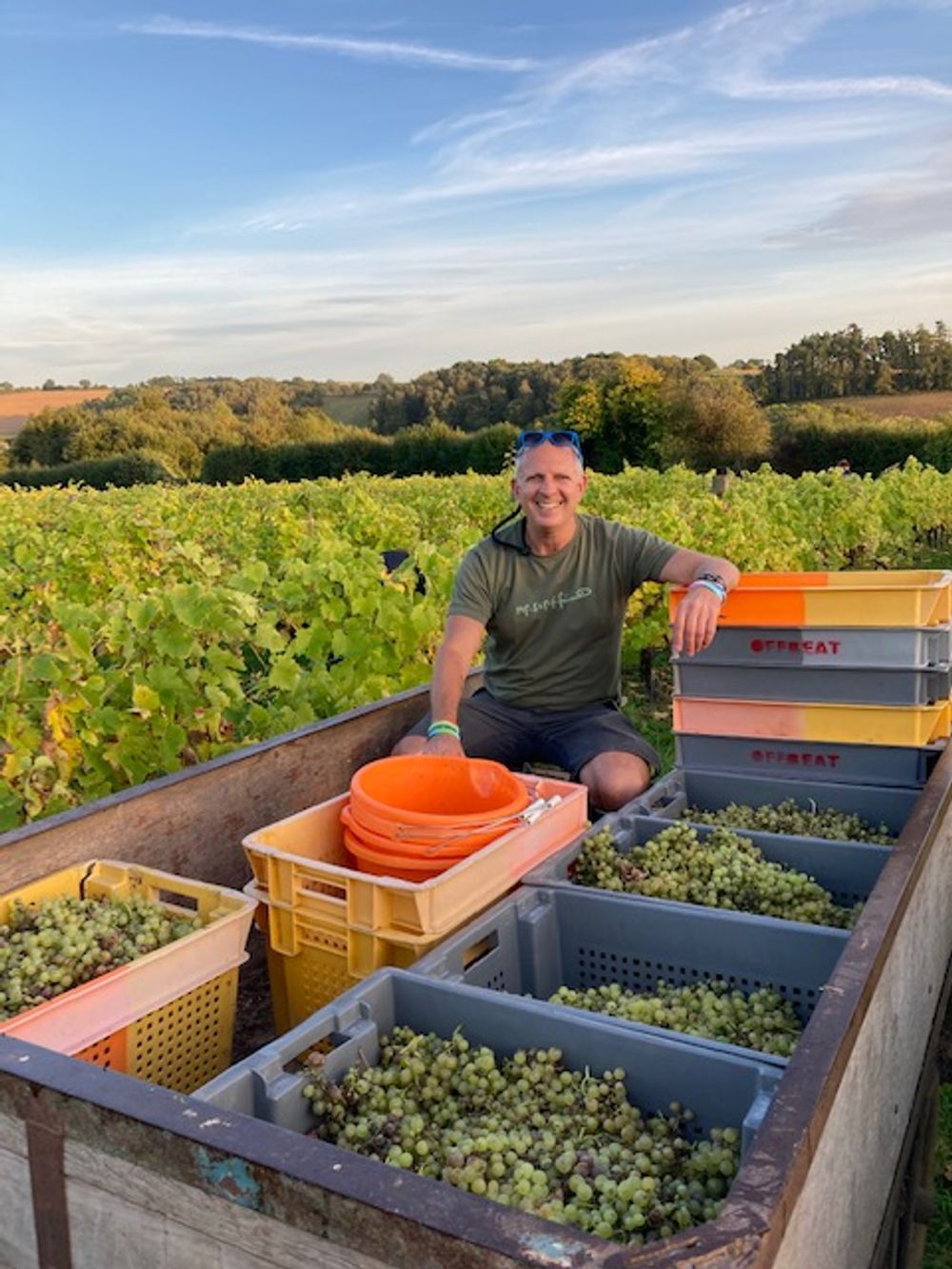
Tim Wildman MW is a pioneering pét-nat wine producer himself, having first started making wines in Australia in 2014 with his breakthrough Astro Bunny brand
The UK is the only country I know that is tying itself up in these knots. The vast majority of pét-nat made around the world is made using a variation of the intermission method, and it’s all labelled pét-nat, not col fondo. There’s a reason why M&S chose to label their wine pét-nat, even though it was made using the intermission method, because it’s easier for the customer to understand. And as an industry we’re not always great at looking at things through the consumer’s eyes, so one of the aims of this event is to clear some of the fog around nomenclature in the pét-nat category, leading to a better understanding within the trade and press, and ultimately clearer communication to the consumer.
Who do you hope will attend?
Trade and press who are curious and open minded, the key word being curious. At a recent masterclass at a trade event on the future of English wine, a journalist from a major national broadsheet berated (unfairly) Nicola Bates, the head of WineGB, for not working hard enough on SEO, and as a result of alleged low SEO activity around English wine, their paper would not feature an article on English wine during English Wine Week this year.
I think most people in the room were staggered, since when did journalists prioritise algorithms over stories? The newsworthy stories about English and Welsh wine are happening right now, under our noses, all you have to do is get in your car, drive 50 miles in any direction, and hunt them down. And a lot of the really new and cutting edge stories are about the people who make the wines that will be at this tasting.
So I hope we see members of the trade who want to find wines to surprise and delight their customers, and members of the press who want to discover stories to interest and excite their readers.
Any early indications of how many producers and wines there will be to taste?
We think there are around 40 producers making pét-nat in the UK right now, almost double the number two years ago. Some are currently sold out, or didn’t make a pét-nat last year, so we’re hoping to see wines from around 30 to 35 producers, which should be close to 50 different wines on the day as some producers are sending in more than one wine.
You have been working on making your own pét-nat wines with Lost in the field - how is that going and what developments have you been able to make?
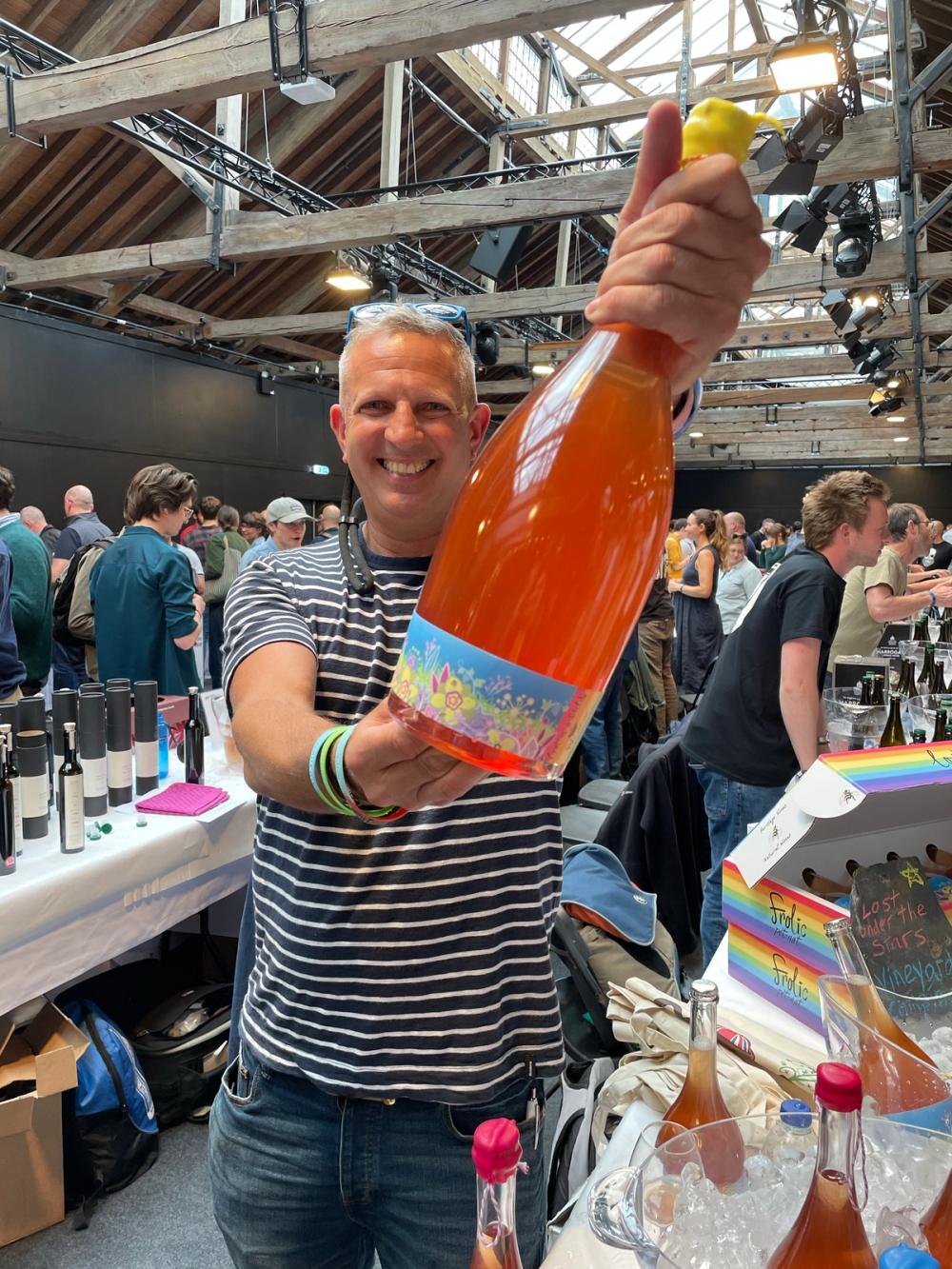
Tim Wildman MW with his Lost in a Field English pét-nat wine brand that he makes using heritiage vines
Never a dull moment. We’ve just released the 2023, our third vintage, with marks a couple of major milestones for us. Firstly I brought on four new growers last year, one from Herefordshire, one from Wiltshire and two from Kent, all who got in touch with me as they had either tasted the wine or heard about it.
Considering the real scarcity of old vine, heritage varieties (most vineyards have been grubbed up, abandoned, or replanted with Champagne varieties) I’m delighted that I’m starting to get access to more high quality fruit by word of mouth.
Secondly we’ve joined up with Les Caves de Pyrene to be our exclusive distribution partner for the UK. It was really important that for the first two vintages I got out in the trade, told the story and sold direct. After living in Australia for six years it was a great opportunity for me to reconnect with the trade, especially since so much had changed post Covid.
But now those hard yards have been done, and the wine has gained an audience and reputation, it’s time to hand over to the professionals, who have much more reach than I do.
If I can focus more on vineyards and securing more fruit then Les Caves can help me sell more, which is very exciting for the future of the brand.
I met up recently with Tamlyn Currin (JancisRobinson.com) and we did a mini-vertical of all three vintages of Lost in a Field, 2021, 2022 and the new release, 2023. It was amazing to see how the older vintages held up, showing that zero sulphur wines can age and improve. The tasting also showed how we’ve been mastering and refining the style over the last three years, and whisper it, but we both agreed that the 2023 was the best yet.
You are also making pét-nat wines in Australia with Astro Bunny - what differences, or similarities are there about making pét-nat in the two countries?

The Buyer has been following Tim Wildman MW and the story behind his Astro Bunny wines since he first brought them to the UK
You can make pét-nat any where, as long as you’re prepared to adapt. In South Australia I make my Astro Bunny and Piggy Pop pét-nats from heat resistant, drought tolerant, high acid Italian varieties such as Nero d’Avola and Fiano. In England the challenges are the complete opposite, too much rain not enough sun, so I’m using early ripening, old vine German heritage varieties. I also see a great future in this country in making pét-nat from the disease resistant PIWI varieties (solaris, rondo, cabernet noir, muscaris and others).
There is a greater sense of community and collaboration in Australia, I don’t see a lot of that here, although there’s a cluster of vineyards and wineries on the Wales - Herefordshire border that are developing a community around pét-nat, and who are interestingly all planting PIWI varieties.
When I started making pét-nat in the Adelaide Hills in 2014 there were just six producers making pét-nat in the country, now there are probably over 400. I’ve seen the category in Australia grow from being niche to mainstream, if you go into any wine shop in Sydney or Melbourne there’ll be a Champagne fridge and a pét-nat fridge, and most wine bars and restaurants will have a dedicated pét-nat page.
I think part of that success came from all of us producers in the early years sharing information, and sometimes even equipment. There was a community, centred around Basket Range in the Adelaide Hills, with producers such as Jauma, Lucy M, BK Wines, The Other Right and myself who were all focusing on pét-nat and trying to make it better every year.
It was during those years that we developed the intermission method of making pét-nat (either two staggered picks, or freezing fresh juice to add later) that I introduced to the UK when I made my first pét-nat here in 2021, and now many people have adopted as simply being the “smart way” to make pét-nat.
The alternative, the interruption method, whereby you interrupt a rolling ferment by bottling, almost inevitably leads to issues of high solids, tartrate crystals and gushing, and the necessity of disgorging.
I used the interruption method for my first two vintages in Australia (2014 and 2015), the first was too explosive and had to be disgorged, and the second not fizzy enough, jokingly a flat-nat. It was also the Aussies who popularised the abbreviation of pétillant-naturel to the more playful and catchy pét-nat,a change that definitely helped establish the category.
Having witnessed the growth of the category in Australia, from a handful of producers to hundreds, I’m fascinated to capture the scene in this country in its infancy, through this tasting, and to encourage both the producers and the trade to believe that in terms of growth, the sky’s the limit.
What can the English learn from the Aussies and vice versa?
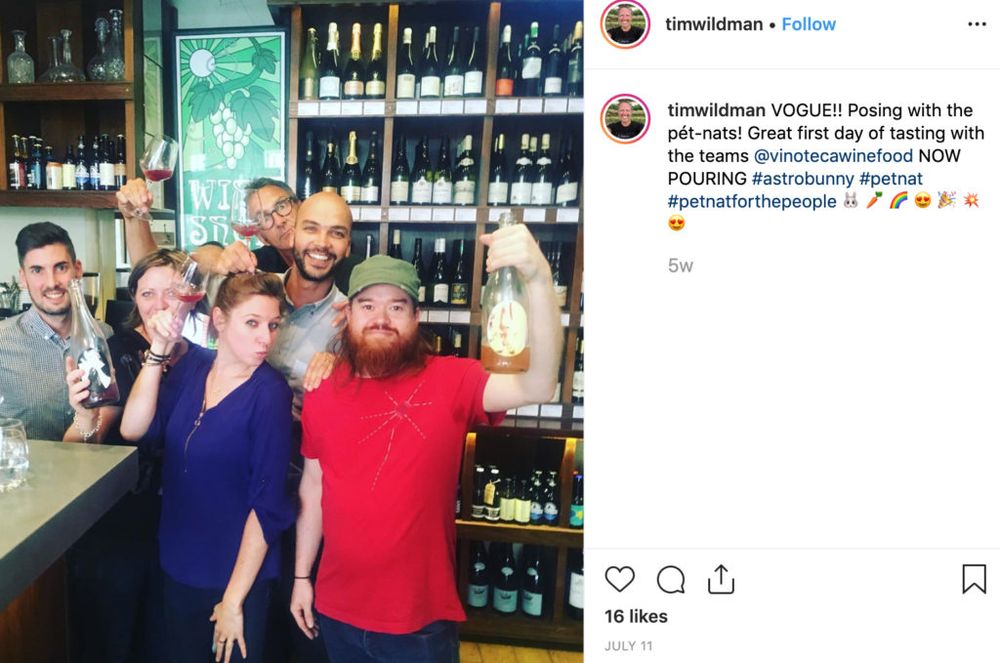
Tim Wildman MW was successful in using social media to create a buzz and excitement about the arrival of each Astro Bunny and pét-nat launch in Australia and now in the UK
I think English and Welsh producers are increasingly adopting the intermission method that has become so successful in Australia to make more stable, scalable pét-nats. I think using the one term - pét-nat - to describe both the wine stye and the category is something we could do better at in this country. We have an incredible opportunity to build a category for pét-nat, especially amongst Gen Z and Millennials, I don’t think labelling some wines col fondo rather than pét-nat because of some obscure technical process the winemaker did or didn’t do in the cellar a few months after harvest, doesn’t help anyone, least of all the consumer.
What do you think of the overall English and Welsh wine scene and what is exciting you outside of pét-nats?
This is going to sound really boring, but the most exciting thing that could happen to English and Welsh wine is better channel management and distribution for the on-trade.
The greatest bottleneck for on-trade sales of English and Welsh wine in the UK currently is the under-representation within the major wholesalers. With some notable exceptions (Liberty, Under the Bonnet) the majority of the UK’s major wholesalers have had a revolving door of English producers come and go in their portfolios over the last few years.
Being familiar with a number of these stories, from both sides, it often comes down to frustrations from producers as to volumes and frustration from the distributors as to producers lacking discipline and selling direct.
Other factors include the large regional wholesalers wanting to go direct to wineries rather than buy through their wholesale partner, as they would wines from Europe.
As an industry we are still trying to work out how best to fit locally made wine into a sales and logistics value chain that is set up to sell wine shipped from overseas on an exclusive basis.
We all know there are probably a dozen major players - if that - who represent over 50% of all UK on-trade distribution. If those dozen distributors could crack this nut we’d see sales double overnight, and it would be a win-win for everyone, from producers through distributors to the consumer. Now that would be exciting.
What next for you and Lost in a Field?
I’m really interested in collaborations, particularly with people and companies in creative fields outside the wine industry. We’ve been speaking to Ed Gamble (Off Menu podcast) and Alex James (Blur / Brit Pop cider) and we’re very excited about the opportunity tocreate a buzz and extend our audience beyond the natural wine bubble.
How do people sign up for the tasting on September 3?
Email me to register tim@lostinafield.com. I would add that although the tasting is advertised to run from 10am to 3pm, as we only have limited samples of each wine, I would recommend people aim to get there earlier rather than later to avoid disappointment.
* Brit-Nat tasting takes place at Soif, 27 Battersea Rise, London SW11 1HG between 10am-3pm.
